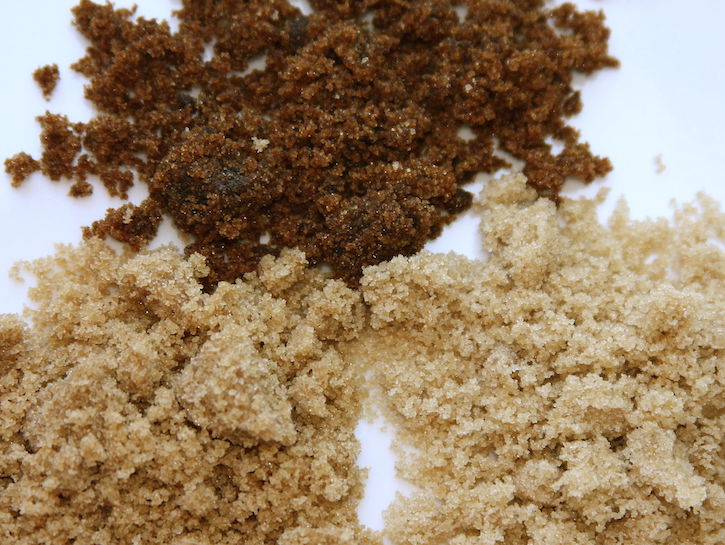You’re all set to start baking, and at the last minute you realize you are completely out of brown sugar. What do you do? Instead of making a beeline for the grocery store, there are some other options to consider — creating some brown sugar substitutes that might be able to save not only your dish, but save you from the trip to the store.
If you find yourself in this situation, here are some brown sugar substitutes you can turn to:
White Sugar And Molasses

Murat Ileten/Shutterstock
Brown sugar is made of white sugar and molasses, so combining the two ingredients is the most accurate way to achieve a suitable brown sugar substitute. For every cup of white sugar, add one tablespoon of molasses to make light brown sugar or two tablespoons of molasses to make dark brown sugar. Then mix the ingredients until the mixture is fluffy and add it to the dish.
Muscovado Sugar

MaraZe/Shutterstock
Muscovado sugar is unrefined evaporated cane juice that is then evaporated and crystallized. It is considered unrefined and natural, and it maintains a darker color because each tiny granule contains molasses. If you’re lacking brown sugar, simply substitute with muscovado sugar at a 1:1 ratio. The sugars are fairly similar in texture, color and taste, so there should be very minimal, if any, differences in your final product.
White Sugar

Alexander Prokopenko/Shutterstock
The easiest ( and obvious) substitution for brown sugar is white sugar, and most bakers always have a stock of granulated white sugar in their homes. Just substitute an equal amount of white sugar for the brown sugar the recipe calls for. However, brown sugar and white sugar do have their differences, so expect the final result to be slightly altered. White sugar is drier than brown sugar, so whatever you are making might end up crispier than usual or have a different texture than expected.
Coconut Sugar

Africa Studio/Shutterstock
Coconut sugar is a great option as a substitute and healthier alternative. It contains roughly the same amount of calories as brown sugar, but its fructose content is a tad lower and it is packed with nutrients, including iron, zinc and antioxidants, which brown sugar does not have. Coconut sugar’s flavor and appearance is also similar to brown sugar, so using it as a substitute will barely affect your final dish.
White Sugar With Maple Syrup Or Agave Nectar

showcake/Shutterstock
If you’re in a pinch and don’t have molasses on hand, you can make a substitute by mixing maple syrup or agave nectar with white sugar. Follow the same ratio rules that exist with molasses — one tablespoon for light brown sugar and two tablespoons for dark brown sugar. These choices will affect the flavor of your final dish, so they shouldn’t be your first choice for a brown sugar substitute.
Honey, Agave Nectar Or Maple Syrup Alone

Oksana Shufrych/Shutterstock
While these ingredients can be added to granulated white sugar to make a sort of brown sugar, they can also be used alone as a brown sugar replacement if you also don’t have white sugar available. However, turning to these ingredients alone should only be done as a last resort. Because these ingredients are all sweeter than brown sugar, use less in your recipe — anywhere from one third to one half of the amount of brown sugar the recipe demands.
Honey, maple syrup and agave nectar also add a high amount of liquid to the dish, so you need to balance the added liquid out so your final result isn’t altered. This can be done by reducing the total amount of liquid by one quarter or one third — for example, if the recipe calls for a cup of water, add half a cup or 3/4ths of a cup instead. You can also add 1/4 teaspoons of baking soda to balance out the acidity and liquid.
When you are baking, it’s important to keep an eye on your dish because these ingredients can have a tendency to burn. Your final product will also be spongier and less dense than normal and might dry out quickly.
